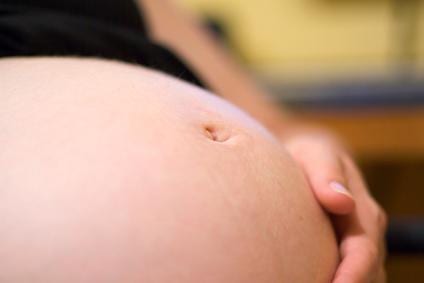While many women do not look forward to the discomfort associated with labor, they are excited about meeting their much anticipated bundle of joy. By knowing what to expect from labor, you can reduce your fear of the unknown and make the process more enjoyable and stress-free. Labor commonly breaks down into three distinct phases. Each of these phases plays an important part in the birth of your baby.
Stage 1: Getting Down to Work
The first stage of labor has three parts. Early or latent labor is the first part of the childbirth process. In this portion of labor, contractions begin and a mother’s cervix starts to dilate. This stage of labor lasts an average of eight hours, or until the mother’s cervix dilates to 4 cm. During this first part of labor, many mothers experience their bloody show, or the discharge of the protective mucus plug that covered the cervix during pregnancy, the Mayo Clinic says. Contractions will be irregular. Many mothers spend this part of the labor process at home or somewhere other than in the hospital.
Once a mother’s cervix reaches 4 cm, she progresses into active labor. In this stage of labor, contractions are closer together and generally more painful. During this stage, moms can expect contractions every five minutes that last up to a minute in length. Many mothers walk around to progress their labor during this stage. A woman decides during this stage whether she wants an epidural, and the pain medication, if requested, is administered. This stage lasts until the mother’s cervix successfully dilates to 7 cm.
The transition phase is the last part of Stage 1 labor. This portion is the most difficult for the mother-to-be, but also the shortest, lasting 30 minutes up to two hours, the Palo Alto Medical Foundation says. At the conclusion of this stage, the mother has reached full dilation and is ready to push her baby into the world.
Stage 2: Hello Baby
The second stage of labor requires the most effort from the mom-to-be. It is during this stage that the mother must begin pushing. The length of this stage of labor varies depending on the mother and the baby’s position. For some women, the birth process requires only one contraction; for others, the act of pushing takes hours to complete, the Palo Alto Medical Foundation says. The vagina and perineum stretch at this point, and a woman may feel pressure as if she has to go to the bathroom. By the conclusion of this stage, the baby has made his way out of his mother and into the world. The umbilical cord is cut shortly after delivery.
Stage 3: Delivering the Placenta
During the third stage of labor, mom has very little work to do, and she is usually quite distracted by her new bundle of joy. The mother has mild contractions as her body works to deliver the placenta, the Mayo Clinic reports. The new mom may be asked to push once more to expel the placenta and finish the birth process. Once the placenta is expelled, the mother is done with the laboring process. This entire process can take from five to 15 minutes.
Photo Credit
- pregnant belly button image by davidcrehner from Fotolia.com





